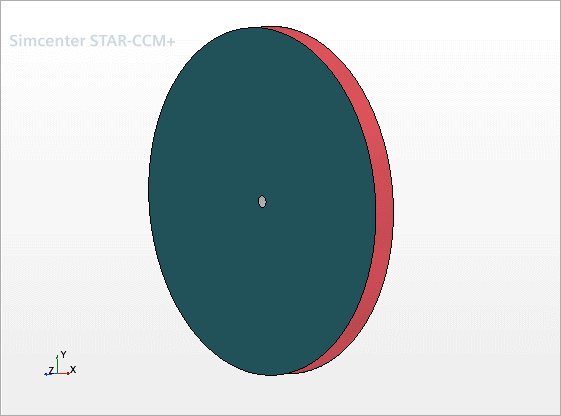Acoustic Wave Modeling: Noise from a Cylinder
This tutorial demonstrates how to set up an acoustic wave simulation in Simcenter STAR-CCM+. The flow around a cylinder is used in the simulation to describe the required steps.
The Acoustic Wave model uses the theory of Acoustic Perturbation Equations (APE) to predict the noise generated by the fluid flow (which is typically incompressible flow). The Acoustic Wave solver is one-way coupled with the flow solver through this APE-based noise source term, and models the acoustic pressure field inside a specified zone of interest. Using the Acoustic Wave model in a hybrid CFD/CAA simulation produces better results (with fewer spurious effects) than a pure compressible flow simulation.
| Note |
The simulation in this tutorial is an example of an application where the flow past a bluff body causes the shedding of unsteady vortices. The Reynolds number in this tutorial, 6.38E4, is in the subcritical range 300 < Re <= 1.5E5. This indicates that the vortex shedding will be strong and periodic, exhibiting the familiar Karman vortex street. The onset of this phenomenon is inherently unpredictable. |
The process for performing an acoustic wave simulation is as follows:
- Perform a steady turbulent simulation to get an initial flow solution.
- Perform an unsteady simulation to get a fully developed flow solution.
- From the unsteady solution, compute the mean flow pressure.
- Activate the Acoustic Wave model in the unsteady simulation.
- Specify the noise source (the zone of interest in the flow) and the acoustic damping function to use in the acoustic wave simulation.
- Run the acoustic wave simulation to obtain the acoustic pressure values throughout the flow region.
You can perform post-processing of the acoustic data to compare the simulation results against other data. Simcenter STAR-CCM+ provides built-in data set functions, such as Fourier Transforms, that you can use to apply signal processing to the acoustic data.
The geometry that is used in this tutorial is shown below.

The geometry consists of a cylinder, 20 mm in diameter, placed at the center of a three-dimensional circular computational domain, 0.6 m in diameter. The air velocity is set to 50 m/s.